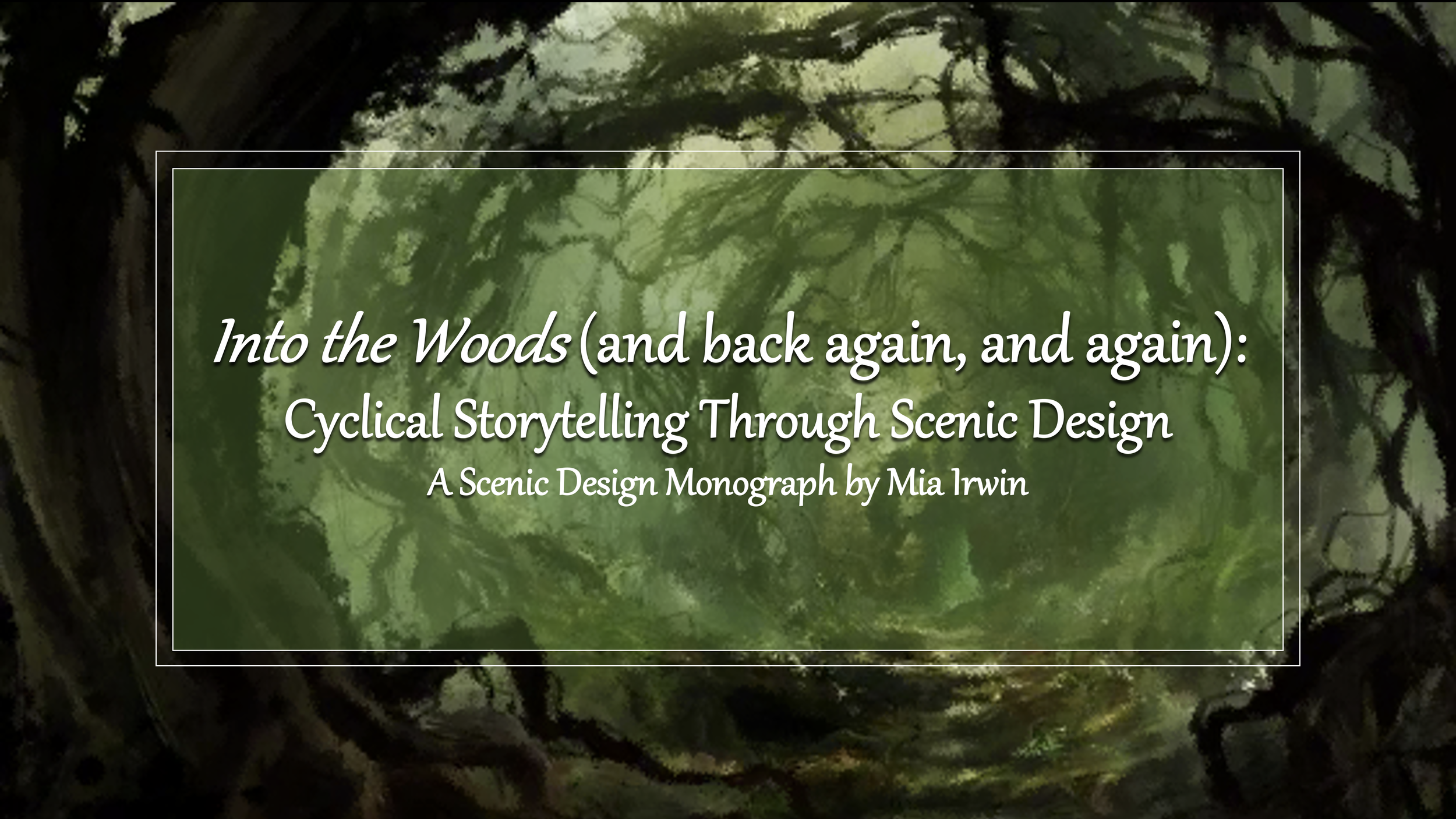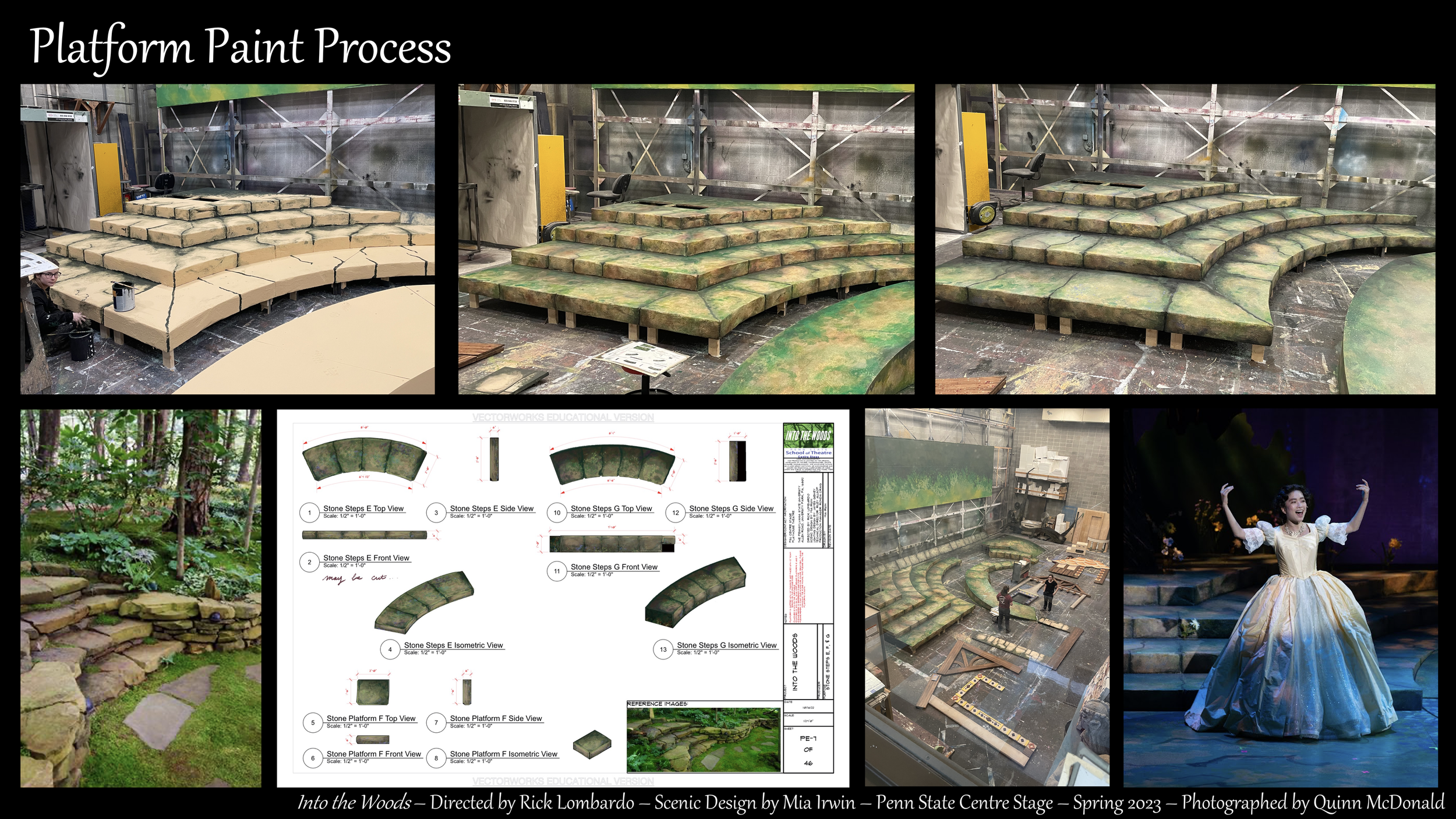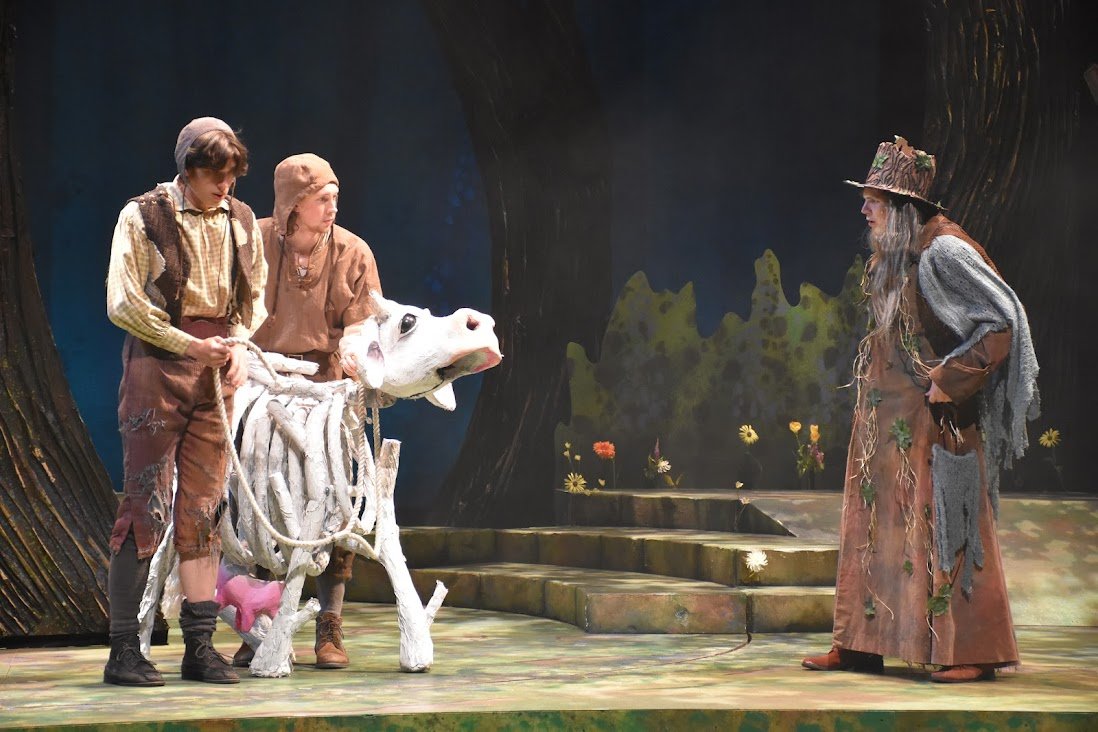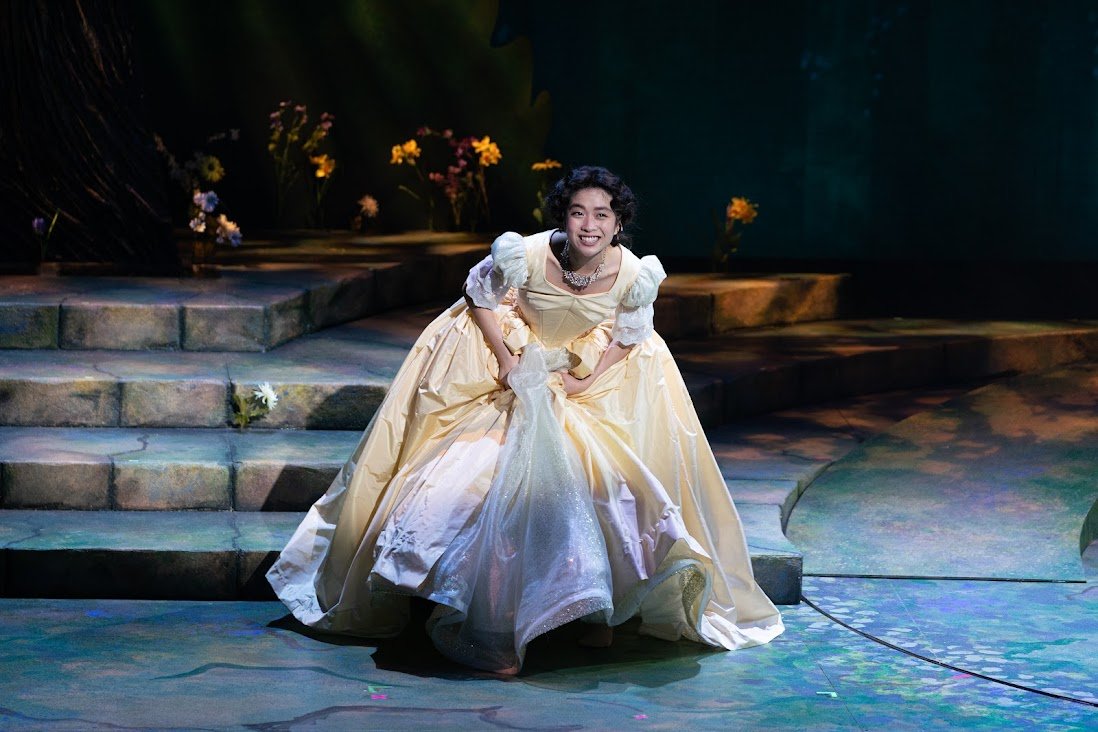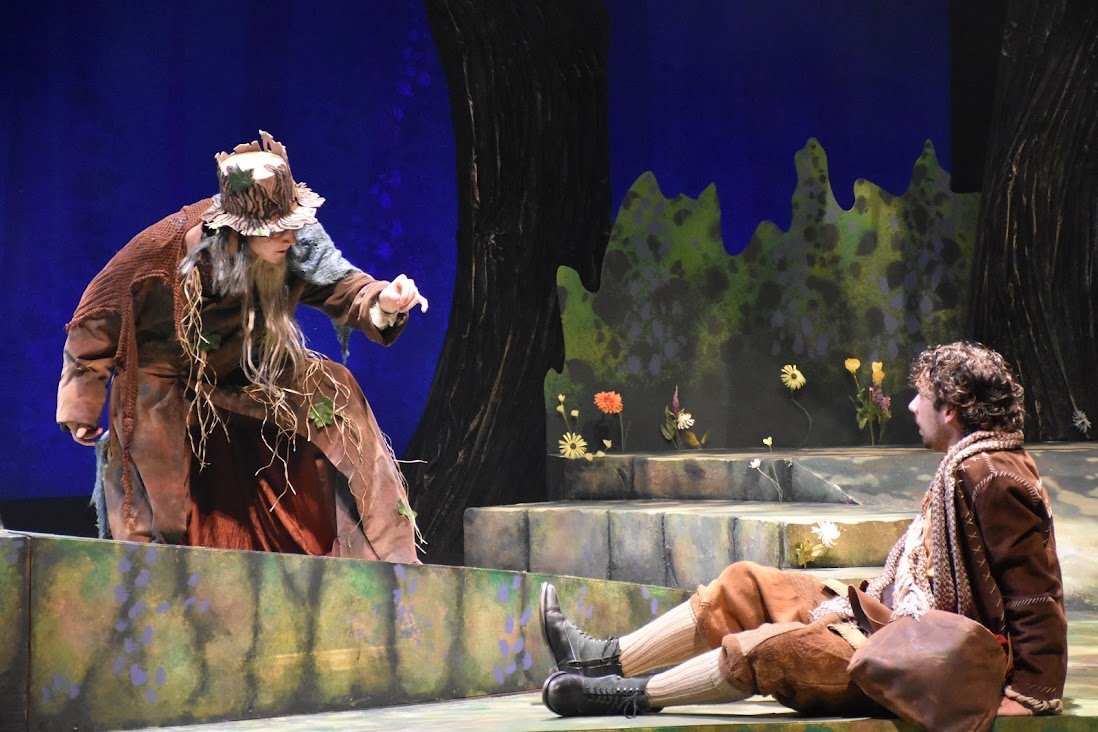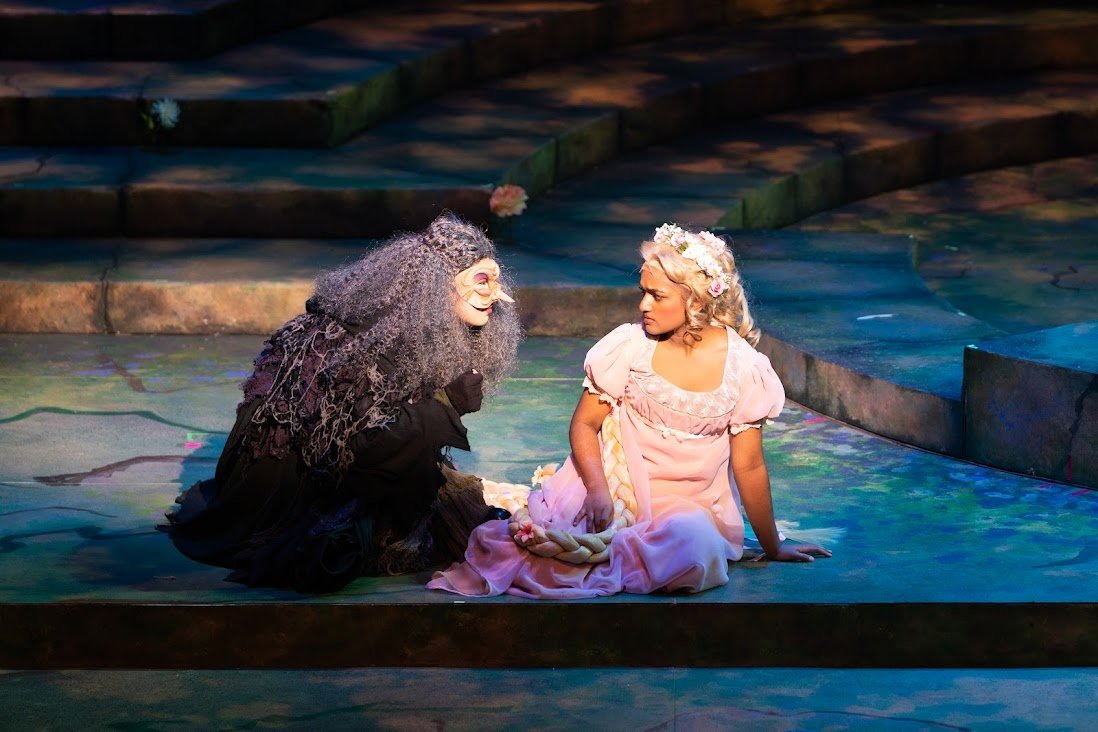
Into the Woods
Playhouse Theatre, The Pennsylvania State University, 2023
Directed by Rick Lombardo - Music Directed by Harry Collins - Choreographed by Christopher Campbell
Scenic Design by Mia Irwin - Costume Design by Jeremy Eiben - Lighting Design by James Gibney - Sound Design by Lauren Petrocelli
No More, Photo Credit: Mason LoPiccolo
Act 1 Finale, Photo Credit: William Wellman
I Guess This Is Goodbye, Photo Credit: Mia Irwin
Act 1 Opening, Photo Credit: Quinn McDonald
Act 1, Scene 2, Photo Credit: Jeremy Eiben
Act 1 Opening, Photo Credit: Quinn McDonald
Your Fault, Photo Credit: William Wellman
Rapunzel, Photo Credit: Quinn McDonald
Last Midnight, Photo Credit: Mia Irwin
Hello Little Girl, Photo Credit: Mia Irwin
Act 1 Opening, Photo Credit: Mia Irwin
No More, Photo Credit: Mason LoPiccolo
Baker's Reprise, Photo Credit: Jeremy Eiben
Act 2 Opening, Photo Credit: Mason LoPiccolo
On the Steps of the Palace, Photo Credit: Quinn McDonald
Act 1, Scene 2, Photo Credit: Jeremy Eiben
Act 1, Scene 3, Photo Credit: Jeremy Eiben
Grandmother's House, Photo Credit: Quinn McDonald
Act 1 Finale, Photo Credit: Jeremy Eiben
Act 2 Finale, Photo Credit: William Wellman
Stay With Me, Photo Credit: Quinn McDonald

Final Rendering

Groundplan

Houses Final Rendering
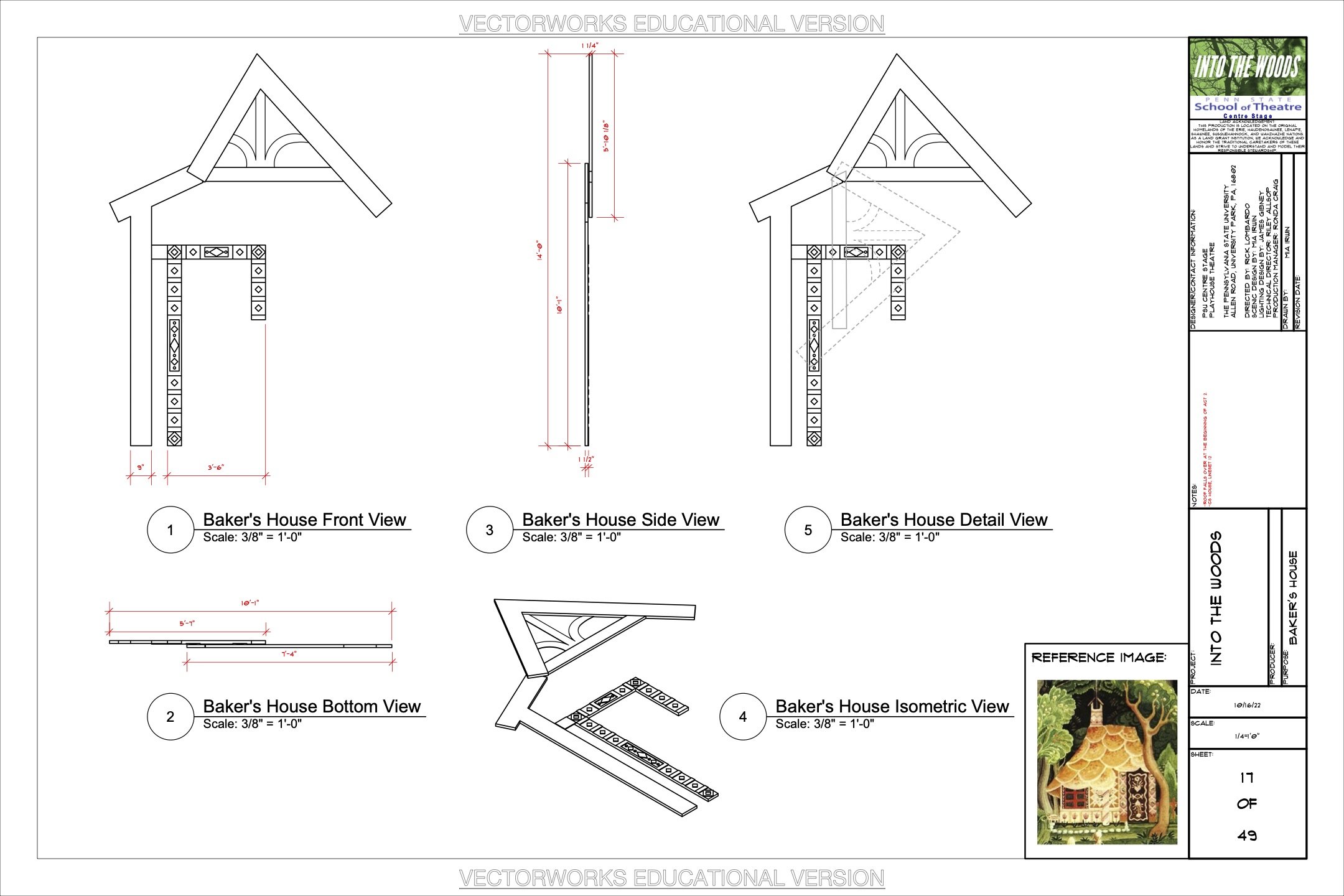
Baker's House Drafting

Grandmother's House Final Rendering

Grandmother's Bed Drafting
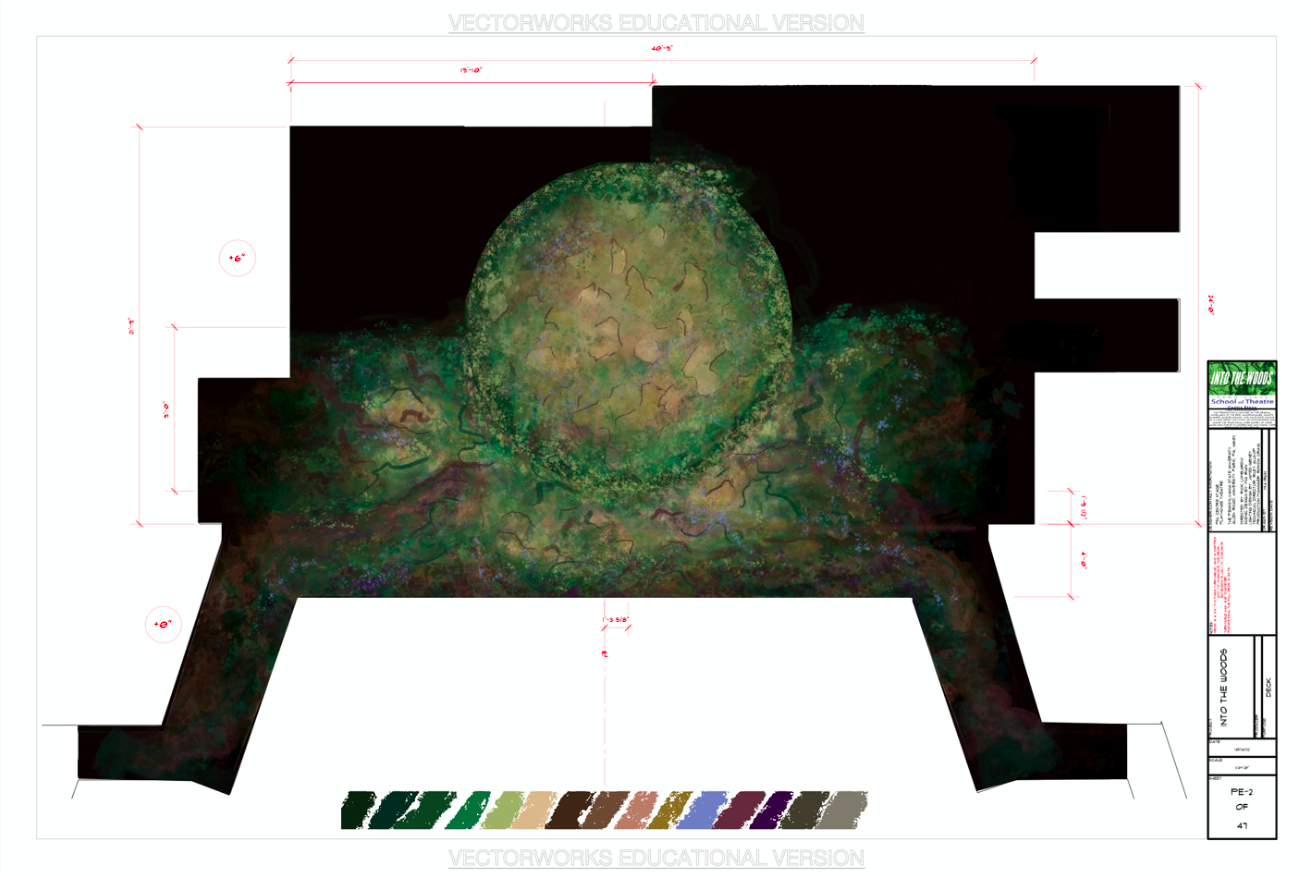
Floor Paint Elevation

Turntable Drafting

Final Rendering

Proscenium Arch Paint Elevation

Turntable Platform Paint Elevation

Cinderella's Prince's Family Crest This piece is an easter egg; it is the Irwin Family Crest!
Master’s Thesis:
Into the Woods (and back again, and again): Cyclical Storytelling Through Scenic Design
Into the Woods is a 1987 musical by Stephen Sondheim and James Lapine that intertwines the plots of several fairytales, including Little Red Riding Hood, Jack and the Beanstalk, Cinderella, and Rapunzel, tied together by a story involving a childless baker and his wife on their quest to begin a family. Into the Woods explores the journeys of growing up; both for the children in the show and for the adults, and the moral gray zones we navigate in the phases of our lives. It’s about accepting responsibility, wish fulfillment and its consequences, and most importantly, our responsibility to young people.
For this production, director Rick Lombardo, who had done this show twice before, wanted to focus on the cultural regeneration of the story of Into the Woods. The first time he did the show, it was just after the AIDS epidemic in 1988. The second time, in 2002, just after 9/11. And this time, just after the COVID-19 pandemic, the war in Ukraine, and the threat of nuclear war on a global scale. What makes a good production is not if it holds up over time, but rather its ability to remain culturally relevant, and for its audiences to be able to find new meanings that connect them to the show in their present realities. For our production, we wanted to focus on this regeneration, more specifically the literal and metaphorical cycles within the show. These include the changing seasons, the tradition of stories passed from parents to children, and motivic consistencies in the music and the lyrics. In particular, we homed in on the natural world, both the abundant life and the fears found in the woods.
Nature; Balance – ever so close to chaos, natural state, both destructive and regenerative
Trees; arcing forms, limbs that look like fingers clawing into the space
Seasons; multifaceted colors, magic
When the scrim and the houses are pulled away at the end of the “Act 1 Opening” and the characters journey into the woods, the audience finally sees the trees of the woods. I designed three arcing structures: the proscenium arch to create the exterior frame of the world, two trees in the center of the stage to add depth to the woods, and two trees creating a frame for the actors to appear in the center of the stage. I was particularly drawn to the curvilinear forms of the trees, creating both elegant structures will also creating scary fingers of gnarled woods, depending on how they are lit.
Both the costumes and the trees needed to communicate multiple seasons. In act one, we are in spring and summer. The colors are over real, hyper saturated, perfect. There is a foliage border to indicate the vibrant nature of forest, as well as flower petals that fall at the end of act for the happy ending. But, as is the cycle of life, nature is both regenerative and destructive. Act two takes pace in fall and winter, where the colors are dilapidated, brown, muddy and overall disheveled. The foliage border flies out revealing the scary fingers of the trees, which were much more backlit throughout the second act, and there were also autumn leaves that fell whenever the giant came into the stage, again indicating the change in seasons.
The next literal cycle within the scenic design was an 18 foot turntable that was used consistently throughout the show and in many ways. It was used as a continuous walkway for characters to travel smoothly through the woods on; for example, when the Wolf is stalking Little Red through the woods. It was used as a facilitator for pulling scenic elements, like the Bakers’ furniture off stage. It was used as a ramp, for people to run into the stage, as well as several versions of seating positions, and overall created really engaging stage pictures with the actors constantly in movement through their journeys.
In a timeless piece like Into the Woods, we can connect all kinds of audiences to the morals within the show. Using the cycles of our lives: seasons, storytelling from parents to children, and emphasis on the regenerative power of human nature, even after devastating losses, we can tell a story about our responsibility to young people.
